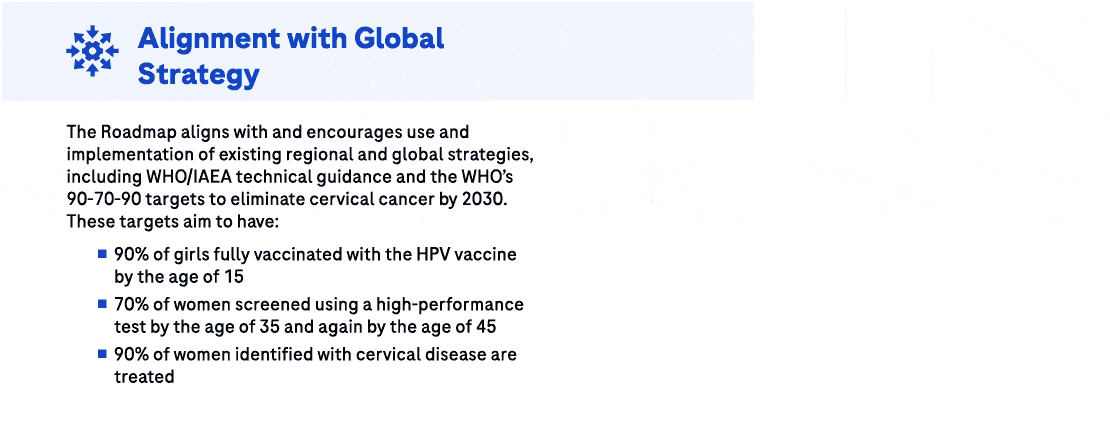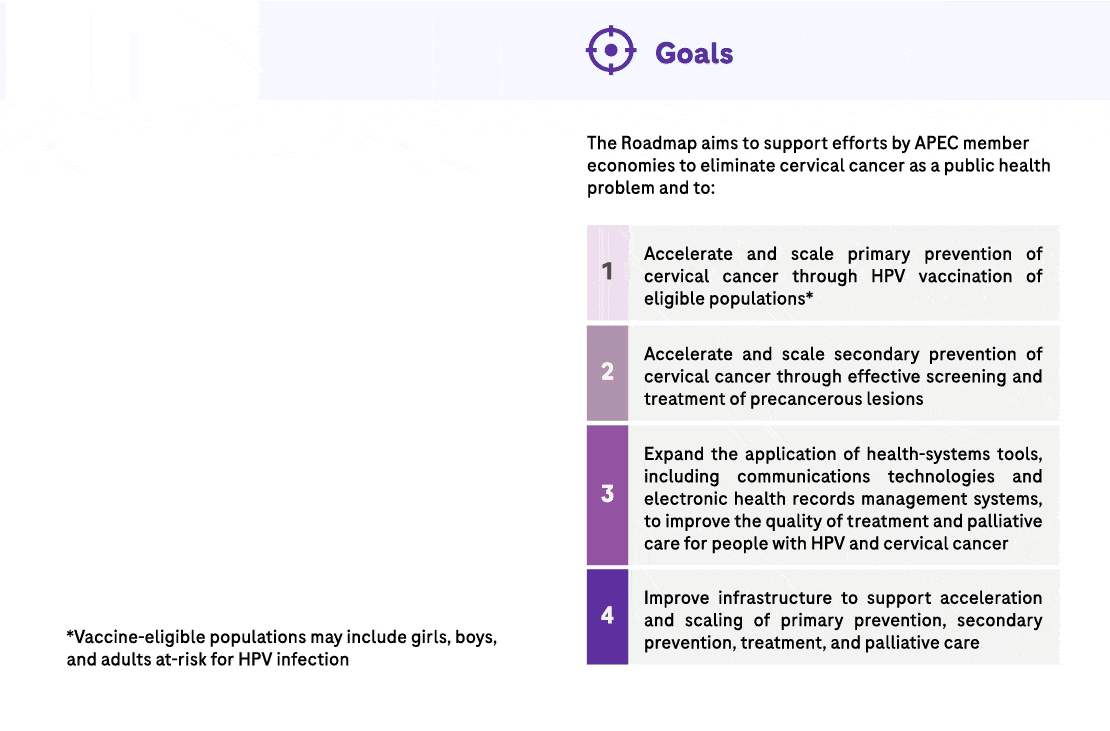Cervical cancer prevention and control presents a unique opportunity to reduce the disease burden and improve women’s empowerment and participation in the economy.
Cervical cancer is one of the most common cancers affecting women worldwide, with more than 600,000 new cases and more than 340,000 deaths estimated in 2020. Approximately 70% of cervical cancer incidence and mortality occurs in Asia, the Latin American/Caribbean regions, and North America.1
Cervical cancer prevention and control presents a unique opportunity to not only significantly reduce the burden of this non-communicable disease (NCD), but to simultaneously improve women’s empowerment and participation in the economy. Effective cervical cancer control strategies exist along the cervical cancer control continuum, including primary prevention (human papillomavirus (HPV) vaccination), early detection and secondary prevention (e.g., screening, triage, treatment of precancerous lesions, treatment of women found to have invasive cancer, and symptom management/palliative care).2,3
The large number of interventions currently available and on the horizon can facilitate integration of cervical cancer prevention and management approaches into existing health systems across economies of many different resource levels and have a substantial impact on public health, the workforce, and the broader global economy.4 Furthermore, investments in cervical cancer prevention and control across the continuum, in line with WHO targets5, can simultaneously improve the health system’s ability to address other cancers and NCDs.





Download the roadmap here.






